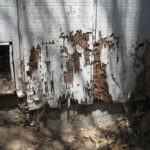Owning a home is a dream many American families look forward to as some point in their lives. From mortgage payments to insurance payments to general household repairs and maintenance, it is possible that homeownership can leave even the most savvy of individuals in a financial nightmare.
One aspect of homeownership that is creating much stir among the real estate market involves the infestation of termites. With termite infestation in a home, most home loans will not be approved. For this reason, if you are about to sell or buy a home that is noted to be at risk for termite infestation, there are some basic rules of thumb you should know before hiring a termite inspector.
First, if you’ve been told the home will fall to the ground in six months, due to a termite infestation, this is simply not true. However, it is a great scare tactic used by many termite contractors in an effort to boost work orders and frighten homeowners into approving a full spectrum of termite treatment and termite prevention services.
To assist you in understanding what, exactly, is going on within the structure of your home, you should first understand the classification, or types, of termites. There are termites who bury into the wood structure of your home, known as worker termites. The worker termite works under the soil of your home, in search of wood and water. To create a path to the wood framing of your home, the termite must create a tunnel, working his way up the tunnel and into the wood frame structure of the home. For this reason, worker termites are only found in the wood connected to your home. If the termite inspector shows you termite infestation along your fence line or in your property trees, this is not cause for concern in your home.
In addition to worker termites, the other type of termite you will see is what is known as the swarmer termite. Swarmer termites are responsible for building colonies and mating. These termites do nothing more than that and will be found imbedded in the soil around your home’s foundation.
And, yes, termites fly. However, before you assume those flying bugs in your home are termites, look again. Because ants also fly, the pests flying about your domicile may not be termites. To determine what is ailing your home, catch or kill a flying pest, check the wing span and the body. If the wings are asymmetrical, or the body is curvy and not linear, this is a flying ant. Again, with thousands of pest control companies across the United States, many families are falling victim to believe these are termites that will, eventually, infest the frame.
As with any home maintenance and home repair issue, it is important to seek out the advice of a well qualified inspector and pest control company. Before falling prey to the confirm nation of termites that do not exist, obtain multiple inspections and understand what termite infestation really looks like. You may save your wallet several thousands of dollars in the process.


